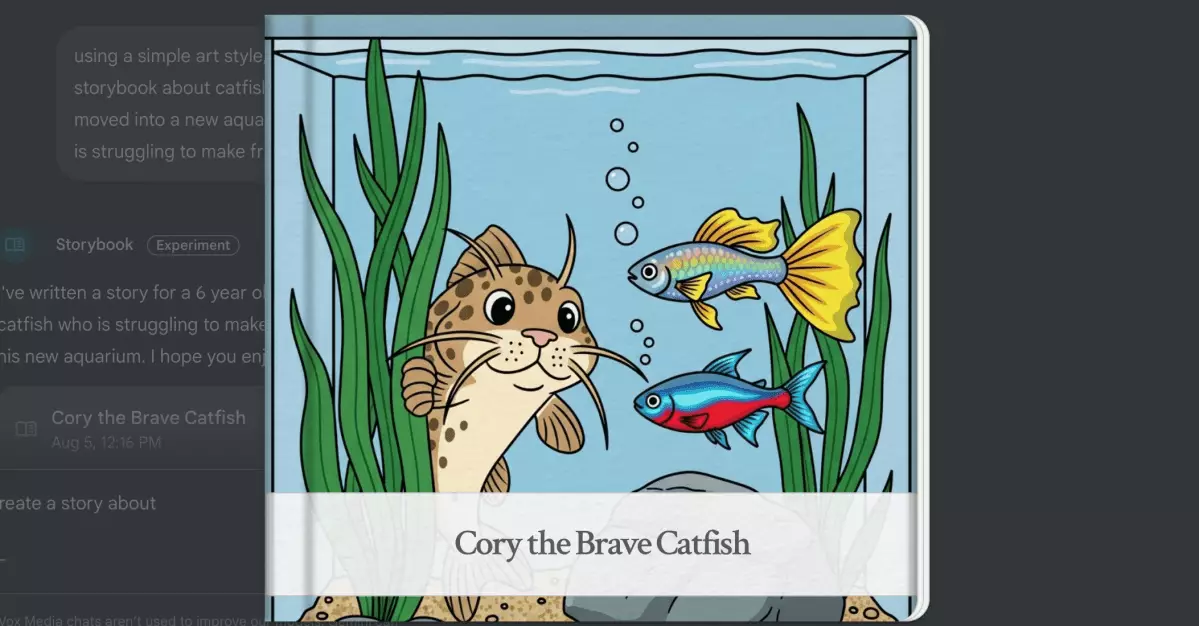In an era where artificial intelligence increasingly influences creative domains, Google’s new Gemini “Storybook” feature exemplifies both the promise and the pitfalls of AI-driven storytelling. On the surface, the ability to generate illustrated stories in diverse art styles by merely describing your ideas seems revolutionary. It democratizes content creation, enabling even those without artistic talent to produce vibrant narratives and visuals tailored to their imagination. Yet, beneath this gleaming veneer lies a series of imperfections that challenge the true potential of AI in art and storytelling.
From the outset, the concept of generating a cohesive, engaging story spanning a mere ten pages from a simple prompt appears to be an impressive leap forward. The feature’s flexibility in customizing art styles—ranging from claymation to anime—further amplifies its appeal. However, in practice, the execution reveals notable inconsistencies that hinder the immersive experience such technology aims to provide. When I tested the tool by requesting a story about a fish trying to make friends, I encountered more than just minor glitches; I faced a series of AI-generated oddities that underscore the current limitations of such systems.
Inconsistencies in Visual and Narrative Cohesion
One of the most glaring issues I encountered was the inconsistency in character depiction. For instance, an illustration containing a cartoon fish unexpectedly featured a human arm—a jarring and surreal mistake that disrupts the viewer’s suspension of disbelief. Similar inconsistencies appeared in other stories, like a spaghetti sauce scene that resembled a crime scene or a family on a TV screen positioned incorrectly. These errors are not only amusingly odd but also speak to the shallow understanding of context that current AI models possess.
Such errors reveal a critical weakness: the lack of nuanced comprehension of visual and narrative coherence. AI-generated images often misalign with the text’s intent, and story plots tend to oversimplify or produce lackluster plots—not necessarily due to a lack of imagination but because of the models’ limited grasp of storytelling intricacies. While the ability to upload personal images for inspiration offers a personalized touch, AI’s interpretation frequently falls short, sometimes contradicting artistic visions rather than complementing them.
Creative Limitations and the Challenge of Artistic Fidelity
Despite the technological advancements, AI still struggles with producing high-fidelity, artistically consistent visuals that match user expectations. For example, when I uploaded a hand-drawn cartoon cat, Gemini failed to replicate or even align with the character’s style, creating images that felt disconnected from the initial drawing. This gap underscores a broader challenge: while AI can mimic specific styles, it often lacks the depth of understanding needed to honor individual artistic nuances genuinely.
The entertainment industry, educators, and aspiring creators face a crucial question: should AI be viewed as a helpful tool or as a replacement? Currently, it appears more like a novice assistant—capable of generating initial drafts but incapable of delivering polished, professional-quality art without significant human intervention. In stories meant for children, where charm, consistency, and emotional resonance are key, these AI missteps can undermine the narrative’s impact.
The Future of AI in Creative Storytelling
Looking ahead, the trajectory of AI-generated storytelling will undoubtedly improve. As models learn from larger datasets and become more refined, we can expect a rise in visual and narrative accuracy. However, the current state of the technology reminds us that AI is still in its infancy when it comes to crafting cohesive, artful stories that resonate deeply with audiences.
The core issue remains: AI, for all its speed and versatility, lacks genuine artistic intuition. It can synthesize styles and generate images, but it often does so at the expense of consistency and depth. For creative professionals and casual users alike, this means recognizing AI as a complementary tool rather than a complete replacement. The human touch—the intuition, emotional insight, and nuanced understanding—remains indispensable.
In essence, Google’s Gemini “Storybook” showcases a tantalizing glimpse into what’s possible when AI intersects with storytelling and art. Yet, until these systems evolve to better understand context, character, and aesthetic harmony, they will continue to produce “hiccups” that remind us of their current limitations. As enthusiasts and skeptics, we should appreciate the innovation while remaining critically aware of its deficiencies—embracing AI’s potential while acknowledging that true artistic mastery still resides beyond its reach.

